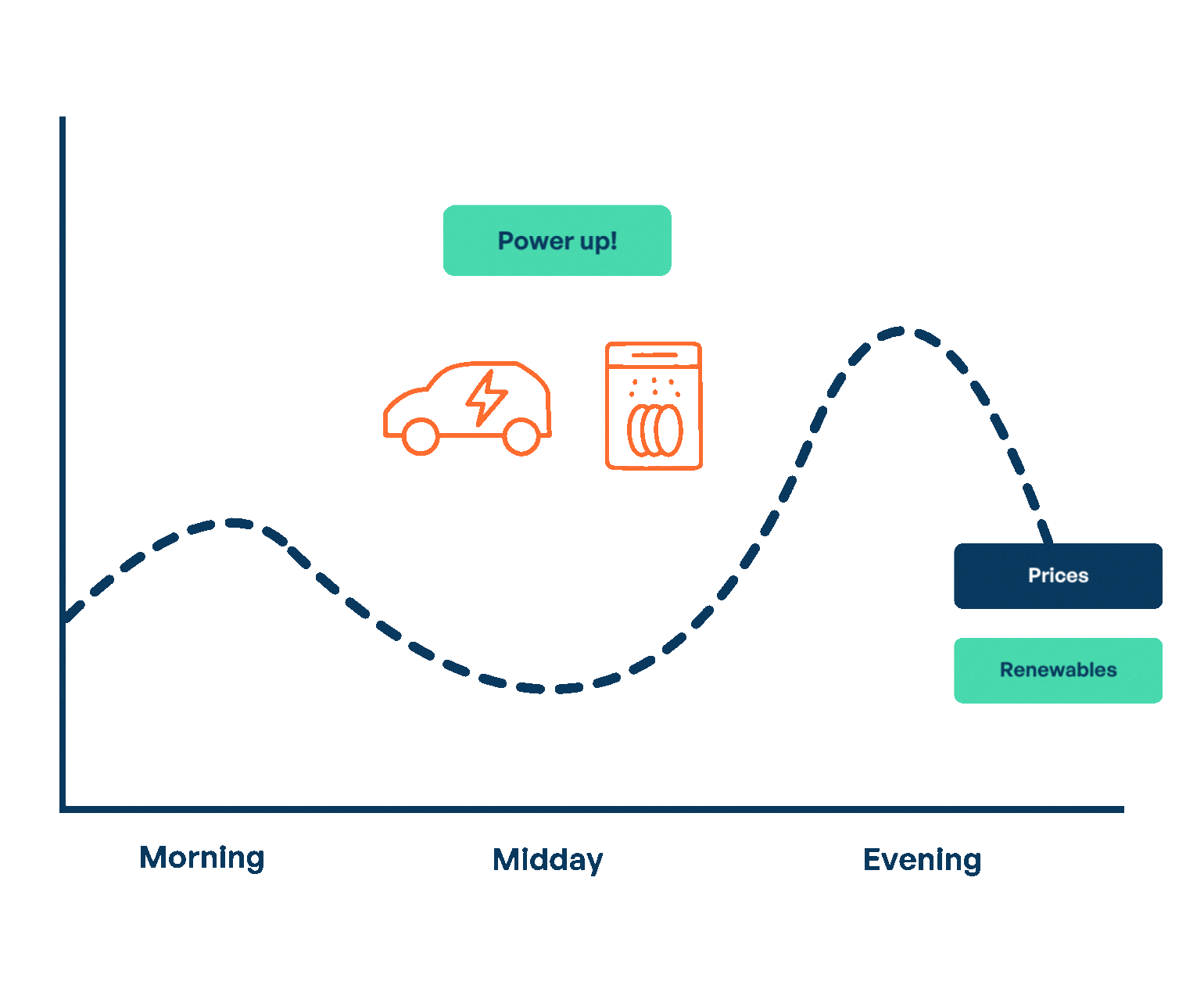OUR PRICING
Your rate,
in your hands
At Flow Power, we give you the opportunity to influence the rate you pay for electricity.
Like typical retailers, you can expect to receive a daily supply charge and a base rate for your electricity usage, based on where you live – but this is just your starting point.
From here, your rate will be adjusted based on your energy habits.
Get an estimate
Benefits of our flexible rate
More knowledge, more power
The key to getting the best rate is understanding the wholesale energy market.
Using our app, you can learn to recognise price patterns to make informed choices about your energy use —saving money and supporting cleaner energy.
Unlock lower rates
Benefit from wholesale market price drops.
Gain the power to reduce your final electricity rate when using energy during these price drops – without having to join a wholesale electricity plan.
Support clean energy
Our flexible rate encourages and rewards you for using electricity when there is more renewable energy in the grid.
This shift reduces demand at peak times – when levels of polluting fossil-fuelled energy is typically higher.
Minimising
fossil fuels
Fossil-fuelled energy is typically dominant during peak times, which is why we encourage reducing energy use during these periods.
If you can’t shift energy-hungry devices to run outside of these times, you could end up increasing your rate that month.
That said, your rate adjustment is calculated based on your overall averages, so an off day won’t significantly impact your results.
Bottom line: your electricity rate really depends on how motivated you are to save money and use the greenest energy possible.
Learn more about how we calculate your rate adjustment in our calculation explainer.
Rate adjustment calculations
We want you to win
When you reduce your electricity rate, it means you’ve increased your use of low-cost, highly-renewable energy – supporting grid stability, and our mission to transition Australia to renewables.
That’s why we equip our customers with free technology to make it easier to find the cheapest, greenest times to power up.
Our techReal customer savings

How this EV Owner cut their electricity bill with Flow Home
"I'm paying less now to power my EV and home than what I used to pay monthly for petrol”
Read more
How Paul’s pool pump is reducing his electricity rates
“We’re saving money which is fantastic. But it’s not even about saving money...”
Read more
How Flow Home rewards this greenie for doing the right thing
“It’s all about using the greenest energy you can—and for me, that just happens to align with cheaper prices.”
Read moreUseful links
Concessions & Rebates
Find out which concession or rebates you may be eligible for.

